+Search query
-Structure paper
| Title | Landscape of human antibody recognition of the SARS-CoV-2 receptor binding domain. |
|---|---|
| Journal, issue, pages | Cell Rep, Vol. 37, Issue 2, Page 109822, Year 2021 |
| Publish date | Oct 12, 2021 |
 Authors Authors | Adam K Wheatley / Phillip Pymm / Robyn Esterbauer / Melanie H Dietrich / Wen Shi Lee / Damien Drew / Hannah G Kelly / Li-Jin Chan / Francesca L Mordant / Katrina A Black / Amy Adair / Hyon-Xhi Tan / Jennifer A Juno / Kathleen M Wragg / Thakshila Amarasena / Ester Lopez / Kevin J Selva / Ebene R Haycroft / James P Cooney / Hariprasad Venugopal / Li Lynn Tan / Matthew T O Neill / Cody C Allison / Deborah Cromer / Miles P Davenport / Richard A Bowen / Amy W Chung / Marc Pellegrini / Mark T Liddament / Alisa Glukhova / Kanta Subbarao / Stephen J Kent / Wai-Hong Tham /   |
| PubMed Abstract | Potent neutralizing monoclonal antibodies are one of the few agents currently available to treat COVID-19. SARS-CoV-2 variants of concern (VOCs) that carry multiple mutations in the viral spike ...Potent neutralizing monoclonal antibodies are one of the few agents currently available to treat COVID-19. SARS-CoV-2 variants of concern (VOCs) that carry multiple mutations in the viral spike protein can exhibit neutralization resistance, potentially affecting the effectiveness of some antibody-based therapeutics. Here, the generation of a diverse panel of 91 human, neutralizing monoclonal antibodies provides an in-depth structural and phenotypic definition of receptor binding domain (RBD) antigenic sites on the viral spike. These RBD antibodies ameliorate SARS-CoV-2 infection in mice and hamster models in a dose-dependent manner and in proportion to in vitro, neutralizing potency. Assessing the effect of mutations in the spike protein on antibody recognition and neutralization highlights both potent single antibodies and stereotypic classes of antibodies that are unaffected by currently circulating VOCs, such as B.1.351 and P.1. These neutralizing monoclonal antibodies and others that bind analogous epitopes represent potentially useful future anti-SARS-CoV-2 therapeutics. |
 External links External links |  Cell Rep / Cell Rep /  PubMed:34610292 / PubMed:34610292 /  PubMed Central PubMed Central |
| Methods | EM (single particle) / X-ray diffraction |
| Resolution | 1.85 - 8.3 Å |
| Structure data |  EMDB-24642:  EMDB-24643:  EMDB-24644:  EMDB-24645:  EMDB-24646:  EMDB-24647:  EMDB-24648: EMDB-24649, PDB-7rr0: 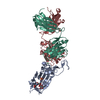 PDB-7mzf: 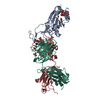 PDB-7mzg: 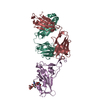 PDB-7mzh: 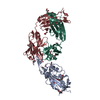 PDB-7mzi: 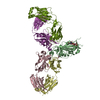 PDB-7mzj: 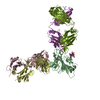 PDB-7mzk: 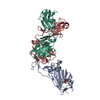 PDB-7mzl: 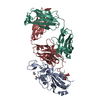 PDB-7mzm: 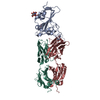 PDB-7mzn: |
| Chemicals |  ChemComp-SO4:  ChemComp-CL:  ChemComp-GOL:  ChemComp-HOH: 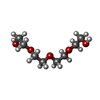 ChemComp-PG4: 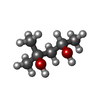 ChemComp-MPD: 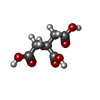 ChemComp-CIT: 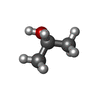 ChemComp-IPA:  ChemComp-NAG: |
| Source |
|
 Keywords Keywords | VIRAL PROTEIN / SARS-CoV-2 / spike / RBD / human antibody / VIRAL PROTEIN/IMMUNE SYSTEM / Antibody / SARS-CoV-2 RBD / Complex / VIRAL PROTEIN-IMMUNE SYSTEM complex |
 Movie
Movie Controller
Controller Structure viewers
Structure viewers About Yorodumi Papers
About Yorodumi Papers






 homo sapiens (human)
homo sapiens (human)